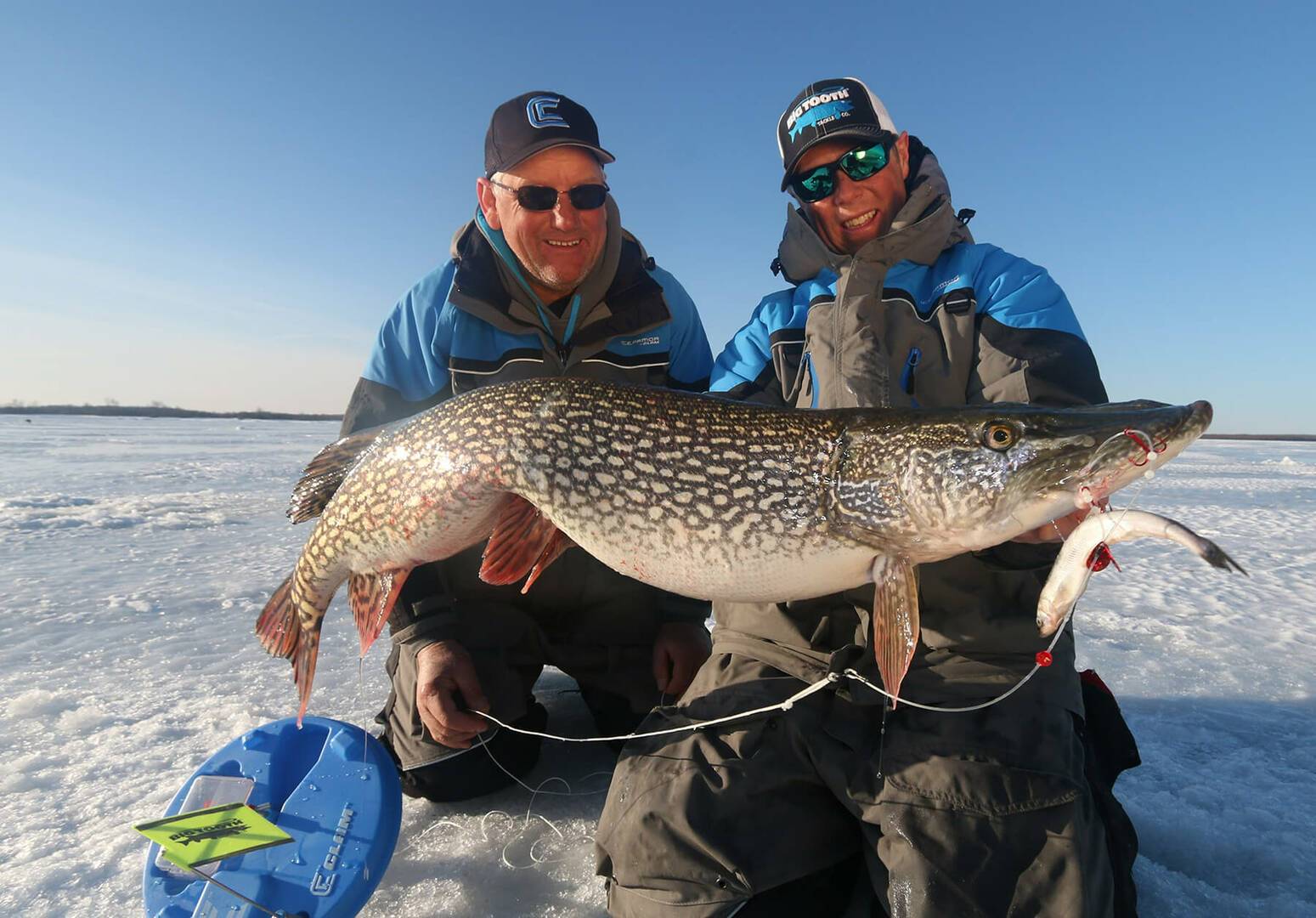Fishing Late Season Ice

Fishing Late Season Ice
February is the time of year when, in Iowa, most outdoor sports and recreation shows are taking place, giving reason for the thoughts of open water. Reality soon sets in as you peer out the window and see a blanket of snow covering much of the ground and fishing boats remain locked in winter’s coat. Ice still dominates lakes, ponds, and reservoirs. Ice fishing remains the mainstay for going after crappie, bluegill, perch, and walleye.
Safety First
As any ice angler knows, safety on the ice is paramount. The truth is there is no “safe ice.” Check ice using a spud bar, and never go alone; take a length of sturdy rope that can be used to help pull you or your fishing partner to safety. Let someone know where you are fishing and when you are expected to return. It’s always better to err on the side of caution than not. It’s been said many times on social media as we read of tragic events where any angler or several have gone through the ice in an attempt to get to their “honey hole.” No fish is worth losing your life for…stay safe.
Where to Look
For ice fishing, the short answer to that question is…look for the ice shacks! Anglers that fish a lake frequently have already patterned the fish or, historically, will know where to look. So that’s a quick way to get into some tremendous late ice panfishing. Just remember to be courteous…they were there first. One of the best friends an angler can have, whether you are fishing open water or ice, is a lake map that shows the contours, creek channels, and submerged structure. An excellent resource for lake information is the Iowa Department of Natural Resources website: Where to Fish | Department of Natural Resources.
You can find printable lake maps, as well as printable fishing structure maps. GPS coordinates are listed for anglers using some of the newest technology to help locate fish, providing the exact location of rock piles and submerged brush piles. Creek channels, main channels that run through the lake, and even road beds all have fish-holding features.
I recommend looking for creek channels that come off the main lake with about two to three feet of drop-off from 10-13 feet of water. Follow those creek channels into areas marked with structure, or if you’re not sure, start punching holes in the ice and do some sleuthing with your electronics. You’ll find the fish if you can find both the weed beds or brush piles right off the creek channels. These fish will stage either off the drop or up in the weed beds and brush piles.
Another critical component of this time of year is looking for turbid water. And by turbid, I mean areas in the lake where early runoff is flowing in. These areas will attract small bait fish due to the increased oxygen levels and the food that comes in with the flow. Crappie, bluegill, walleye…, and any predatory fish in the lake will naturally be attracted to the fresh inflow and come into these areas following the food source.
Late-season bluegill patterns are not that much different than crappie, though these fish will tend to relate to structure or off the edges of drop-offs. Drill several holes in these spots. Your electronic gear, flasher, and underwater camera will help you find active fish. Fish each whole until you find some good-sized fish. The larger bluegills tend to be just off the bottom, up to two feet. Smaller fish are often higher in the water column.
The period right at first ice and right before ice out are some of the best times to chase after keeper bluegill. You should see crappie moving in to shallower areas, but don’t expect to find them in five to 10 feet of water. Look for crappie in the same areas you found them in January.
Walleye will begin to transition to shallower areas following the bait fish. An effective tactic for locating active walleye is to drill several holes in the ice. By several, we’re talking about 20 or so along the edges of a point where you’ve located active bait fish. Walleye will come shallow to feed and then move back out to the edges of drop-offs. Move from one hole to another until you find an active pod of feeding fish. Once they move off, move with them and find another hole where you’re marking fish. The key is being mobile.
Equipment
Light and ultra-light rods up to six feet will aid in getting your light baits out to the fish. Spool your reels with four-six pound monofilament, even two pounds if you have an incline. The lighter the line, the harder it is for fish to see, and your bait will get down to the fish quicker.
February can be a transitional time for Mother Nature as a whole. Warming temps towards the end of the month and into March will encourage ice to leave area ponds and lakes, and the blanket of snow will give way to a warm embrace of green leaves and grass. Tight Lines All!
by Ben Leal
February 2024



